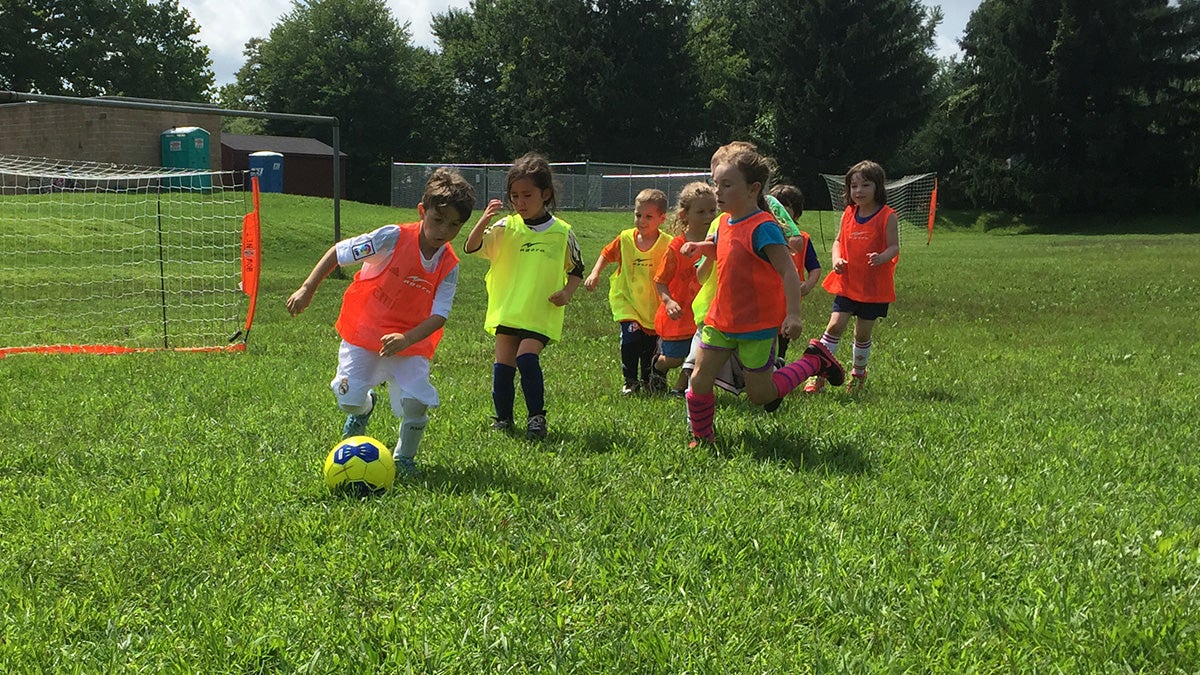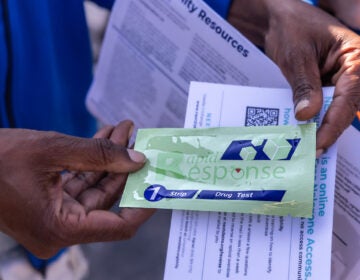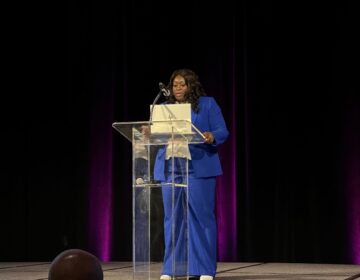U.S. women’s soccer paves way for young Delaware players

Summer Camp. (Zoe Read/WHYY)
Millions of Americans cheered at their TV screens Sunday night as the U.S. women’s soccer team scored goal after goal during the 2015 Women’s World Cup final in Canada.
The U.S. beat Japan 5-2 during the game, with the first three goals scored in the first twenty minutes. It was the first World Cup win for the U.S. since 1999.
After so much national attention, soccer players and coaches hope the future of women’s soccer will be bright.
“It was great display of what girls can do on the field,” said Jon Scheer, a girls’ soccer coach in Newark and the assistant men’s soccer coach at the University of Delaware.
“It gives the girls role models to look up to, and they can look at the style of play and emulate it when they go to camps or train on their own or with their teams.”
The enthusiasm for women’s soccer in the U.S. began an incline after the 1999 U.S team, with household names like Mia Hamm, paved the way for current talent, said Scott Grzenda, head women’s soccer coach for the University of Delaware.
“I think that was the one that really empowered women to say, ‘I can play at the highest level possible,’” he said.
Now, with more than 20 million World Cup TV viewers, Grzenda said he hopes women’s soccer will receive the increased recognition it deserves.
“I think there were a lot of eyes that opened up,” he said. “They see very good, athletically talented individuals out there.”
Young players also are excited about the U.S. win. Helena, a 10-year-old soccer student in Newark, said her favorite player on the U.S. team is Carly Lloyd, the New Jersey native who scored the first three goals during the final.
“She scores a lot of goals and she’s very good at soccer and she’s positive,” Helena said.
Helena is one of about 200 girls who attends the University of Delaware’s summer camp for 3 to 12 year olds every year.
Ian Hennessey, the director of the program and men’s soccer coach at the university, said the World Cup win might help drive commercial interest, which will increase business interest and overall growth for the sport.
“I was thrilled to see over 26 million people had watched it,” he said. “It’s a really a true sign the growth of the game is alive and well, and these professional athletes can continue to be heroes to young children in this country.”
Hennessey’s daughter Kyra, 9, is one of the many young female soccer players who look up to the U.S. team.
“I really want to be a soccer play when I grow up because I really love the game,” said Kyra, who has been playing for five years.
“I thought it was really cool how (the U.S. team) scored so many goals just because they’ve practiced, and I think it’s amazing what you can accomplish when you practice like that.”
While soccer experts are hopeful in the growth of women’s soccer, women still have a long way to go to get the attention they deserve, Grzenda said.
The U.S. women’s soccer team have vocalized their disapproval that they were forced to play on turf instead of natural grass—something they argue would never happen during the men’s World Cup.
“The female teams put in as much work as the men’s teams, and I think they should be getting the same accommodations and all those things that make a world event,” Grzenda said.
Nikki Adams, a center midfielder for the University of Delaware’s women’s soccer team, said she believes men’s sports always will have more public interest in the U.S.
However, the upcoming junior said she is hopeful women’s soccer will continue to grow and female players will continue to improve.
“I know that after watching I’m so excited to get back and play,” she said. “The passion on our women’s team is unbelievable and that carries over to college soccer.”
WHYY is your source for fact-based, in-depth journalism and information. As a nonprofit organization, we rely on financial support from readers like you. Please give today.




